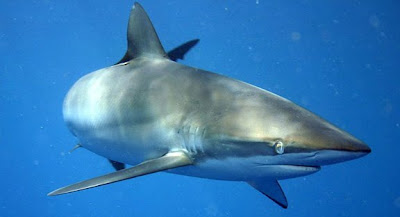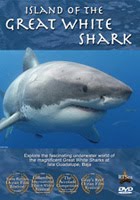 For many, the oceans are both a source of nourishment and a waste disposal site. But they can also be a source of important new medicines. Unfortunately, our desire to fill our stomachs with the ocean's bounty or empty our trash is also threatening its possibilities as a new-found pharmacy.
For many, the oceans are both a source of nourishment and a waste disposal site. But they can also be a source of important new medicines. Unfortunately, our desire to fill our stomachs with the ocean's bounty or empty our trash is also threatening its possibilities as a new-found pharmacy.
In June, I wrote about the ocean's medicinal potential and Jonathan Booth, writing for PolicyMic.com, has written an excellent piece on the deep ocean as a source of new medicines. Rather than paraphrase, here is his piece in its entirety:
Oceanic Discoveries With Medicinal Powers
When we think of obtaining medicines from natural sources, we usually conjure up scenes of trekking through vast swathes of dense tropical forest in search of rare ferns, vines, palms, and other plant life. However, there is now a growing interest in the lesser known organisms that inhabit the oceanic abyss and the medicinal and genetic properties they may contain. An organisation that has taken significant steps to examine deep sea animals is CIOERT, which recently conducted deep sea expeditions in search of invertebrates to help alleviate an array of ailments, including cancer. Likewise, researchers in Australia have discovered derivatives from some sea cucumber species that can work as an anti-inflammatory, and some coral compounds may be used to help with bone grafting or the treatment of tumours. Accordingly, swift actions need to be taken to fund and promote the exploration, research, and protection of the oceans – some of the least explored habitats, which often escape environmental and ecological policy.
Over three-quarters of our planet is submerged under seawater, and with the Pacific Ocean’s deepest point extending over 10,000 metres below sea level, the oceans form undoubtedly the largest habitable and least explored environment on earth. Yet, unlike terrestrial regions, the absence of breathable oxygen, diminishing light levels, and immensely pressurised depths make the seas an almost inaccessible domain for humans. Due to these conditions, marine systems also function differently to land-based habitats. The land relies on plants to capture the sun’s light and combine it with water and CO2 to synthesise sugars; this provides the crux of all land food-webs. In the sunlit upper layers of the sea, conversely, green plants are substituted for single-celled phytoplankton, and terrestrial insects and herbivorous mammals are replaced with zooplankton (a drifting soup of eggs, sperm, and microscopic animals).
The deep ocean is devoid of light so no plants can live in this region; instead, abyssal organisms have to rely on organic detritus that drifts from above, or mineral-laden volcanic plumes that belch from the inner earth. In this unfamiliar realm, it is not surprising that marine scientists are making seemingly countless discoveries about new animals and even new ecosystems.
The sea floor is dominated by the weird and wonderful world of invertebrates. From the colorful architectures of sponges and corals, to mechanical crustaceans and a bewildering array of worms, starfish, sea cucumbers, and sea squirts it is difficult not to be amazed by some of these curious creatures. However, such life forms are not only visually stimulating: In the eyes of the medical profession, their physiologies can be lifesaving too, which reiterates the need to research and preserve oceanic organisms and their environments.
An animal that has been a favorite lab companion for many pharmaceutical industries is the horseshoe crab. With a large, flattened, dome-shaped carapace that masks almost all signs of the segmented limbs that emerge from beneath, and a long, tail-spike that juts out from the rear, this animal almost defies belief. Yet apart from its science fiction-like form, these extraordinary creatures have also caught the attention of the medical profession, who have been collecting specimens over the past few decades to assist scientists with medical trials. This is due to the presence of copper-based haemocyanin in the animal’s blue blood (unlike the red-pigmented ferrous haemoglobin found in mammals); this blood contains amebocytes – white-blood cell substitutes – that can help identify the presence of bacteria in medicinal solutions. Marine discoveries like these have helped to further medical progression, which in the case of the horseshoe crab includes the development of wound dressings, optical research, and the guarantee that all your injections are free from bacterial contaminants.
 Recent discoveries concerning the physiological and genetic characteristics of this cast of organisms are advancing the understanding of medicine, which could be significant for society. In order to further this knowledge, we need to expand deep sea exploration projects and associated research. Since the 1970s, submersibles have discovered not only new fauna, but also entire ecosystems that function without any source of sunlight. However, there is also a need to conserve and protect the oceans. Currently, national marine parks and marine protected areas help to conserve certain coastal regions, such as coral reefs; yet the open oceans and abyss have been largely neglected. Pollution, oceanic waste-sites, overfishing, and other marine exploitations have had adverse repercussions on our marine systems; such impacts could be furthered by the escalating threats of projected anthropogenic climate changes. It is apparent, therefore, that appropriate measures need to be taken to not only research the deep and its inhabitants, but also to conserve it. Otherwise, we may be destroying a ready stocked medicine chest that has yet to be delved into – and a beautifully adorned one at that.
Recent discoveries concerning the physiological and genetic characteristics of this cast of organisms are advancing the understanding of medicine, which could be significant for society. In order to further this knowledge, we need to expand deep sea exploration projects and associated research. Since the 1970s, submersibles have discovered not only new fauna, but also entire ecosystems that function without any source of sunlight. However, there is also a need to conserve and protect the oceans. Currently, national marine parks and marine protected areas help to conserve certain coastal regions, such as coral reefs; yet the open oceans and abyss have been largely neglected. Pollution, oceanic waste-sites, overfishing, and other marine exploitations have had adverse repercussions on our marine systems; such impacts could be furthered by the escalating threats of projected anthropogenic climate changes. It is apparent, therefore, that appropriate measures need to be taken to not only research the deep and its inhabitants, but also to conserve it. Otherwise, we may be destroying a ready stocked medicine chest that has yet to be delved into – and a beautifully adorned one at that.
Read more at PolicyMic.com.
 As a filmmaker, one of the reasons I write the RTSeaBlog is because through my work I have come to see that there is a tremendous amount of important research and data which is not making its way to the decision makers or the general public. This is true in the environmental and ecological field as well as in other disciplines. But I am certainly not alone in this understanding and there is a growing group of young scientists determined to change that status quo.
As a filmmaker, one of the reasons I write the RTSeaBlog is because through my work I have come to see that there is a tremendous amount of important research and data which is not making its way to the decision makers or the general public. This is true in the environmental and ecological field as well as in other disciplines. But I am certainly not alone in this understanding and there is a growing group of young scientists determined to change that status quo.















































